Rule of Thirds
$3 Million Invested 1-2-3 Finish.
In the early ‘60s, Ford had dipped its toes in numerous forms of racing, but not sports car racing. More and more imports were filling the pages of prominent enthusiast magazines and Henry II realized there was a hole in the market Ford could fill. To capitalize quickly, the decision was made to take over or merge with an international company to win races and thus sell cars. The deal went sour after Henry II tried to buy Ferrari with Enzo refusing due to potential loss of racing direction.
So, “Ford Total Performance” was born and over $3 million dollars invested due to a personal vendetta against Ferrari, but to also put Ford on the map of the international sports car racing scene. See the timeline below for an abbreviated look at the history and development of the Ford GT40, an all-american brawler build for the world racing circuit, as well as the key players in the success of the car.
So, "Ford Total Performance" was born ...
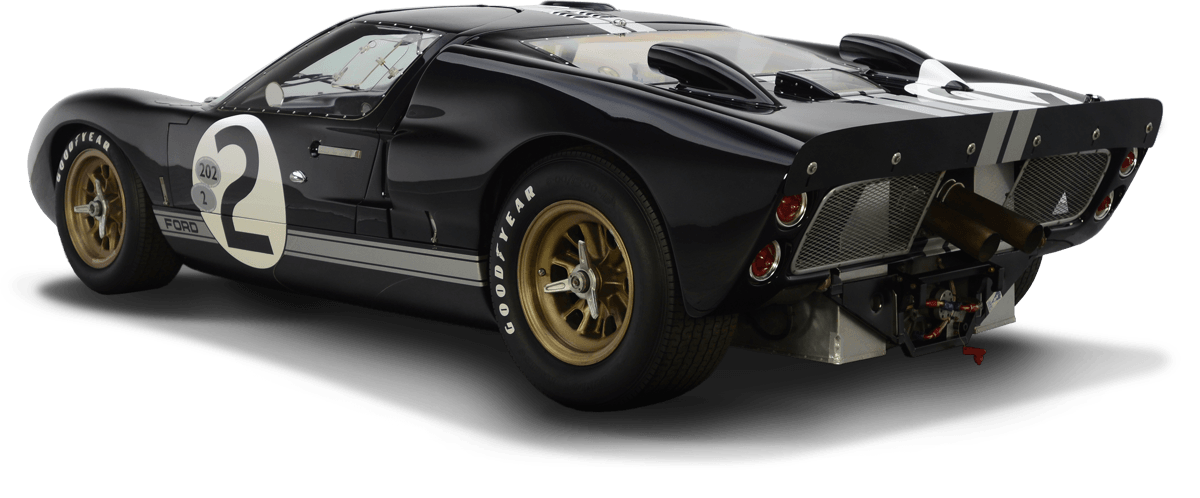

The Timeline:
-
June 1957
The AMA (Automobile Manufacturers Association) bans direct manufacturer participation in organized racing. The AMA ban came on the heels of a catastrophic accident at Le Mans in 1955. The accident involved a Mercedes 300SLR which careened into the crowd killing 100 spectators and injuring others - the worst accident in the entire history of motorsports. Thus in 1957, the members of Automobile Manufacturers Association formed an agreement to back out of organized auto racing and motorsports of any kind.
The ban was more than mere non-involvement in the actual racing. The racing ban also meant that auto manufacturers would not supply pace cars, publicize results, advertise speed-related features of their passenger cars, or help anyone involved in auto racing. Some in the industry felt the self-imposed ban would be sufficient to keep the government from imposing racing regulations on the automobile industry.
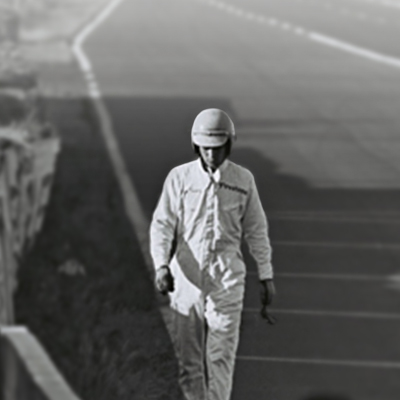
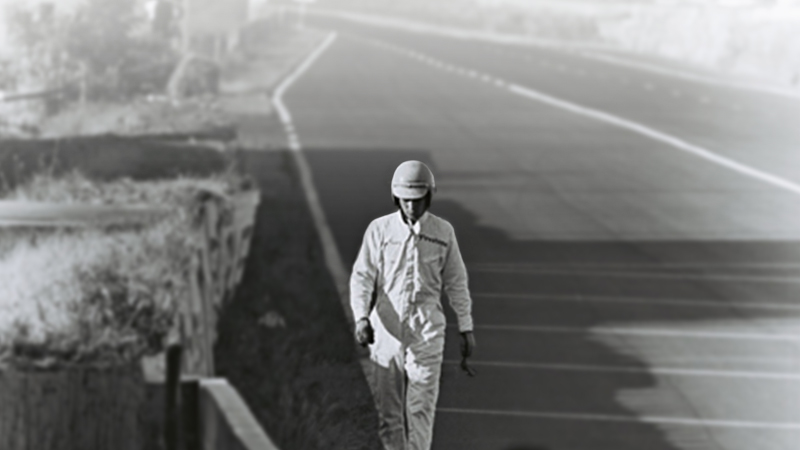
-
June 1962
Henry Ford II announces Ford with withdraw from the AMA Antiracing agreement and the “Total Performance” program begins
Ford Total Performance
The program set up during the racing focused era in which “win on Sunday, Sell on Monday” was business mantra. The program was a philosophy shift for the company. It first required Ford to withdraw from the AMA antiracing agreement. It could then focus on a new generation of buyers looking for power and performance. The program put out some amazing technologies and vehicles, such as Boss 302 and 429 Mustangs, the 427 Fairlane Thunderbolt and, of course, the commitment to achieve greatness at Le Mans with the Ford GT40. The GT40, chassis P/1046, that won at Le Mans was a variant of Roy Lunn’s 1964 prototype Ford GT.
An example of the interesting engineering outcomes of the program was that Ford engineers were able to create dynamometer testing that could replicate the engine and driveline unit workloads for hot laps of the Circuit de la Sarthe (including acceleration, deceleration, shift points and braking) without needing an actual vehicle.

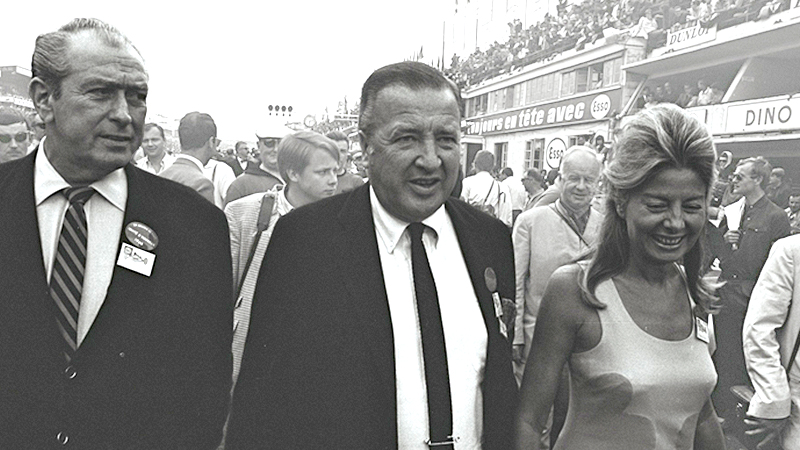
-
October 7, 1962
Ford mid-engined concept car designed by Ford Lead Designer and Executive Stylist John Najjar and Phil Clark, along with engineers Roy Lunn and Herb Misch, together with Bob Negstad, called the Mustang I debuted at the United States Grand Prix in Watkins Glen, New York.
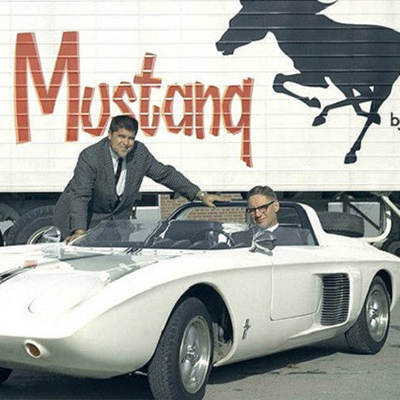
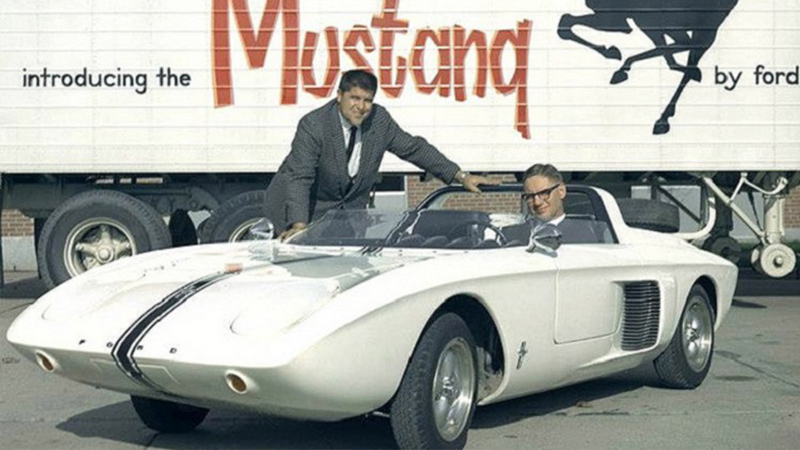
-
May 1963
Henry Ford II’s goals for racing success focus on Europe. He, and GM, Lee Iaccoca, focus on purchasing the know-how and experience for an international race team. The target, the company that had dominated racing - Ferarri. A meeting between the two companies occurred in Modena.
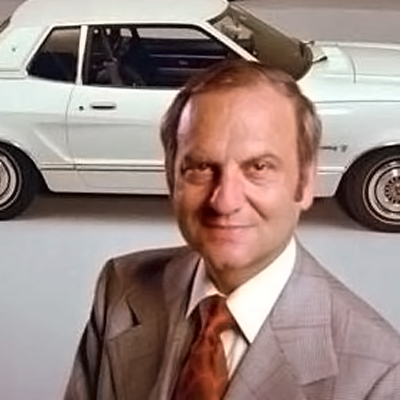
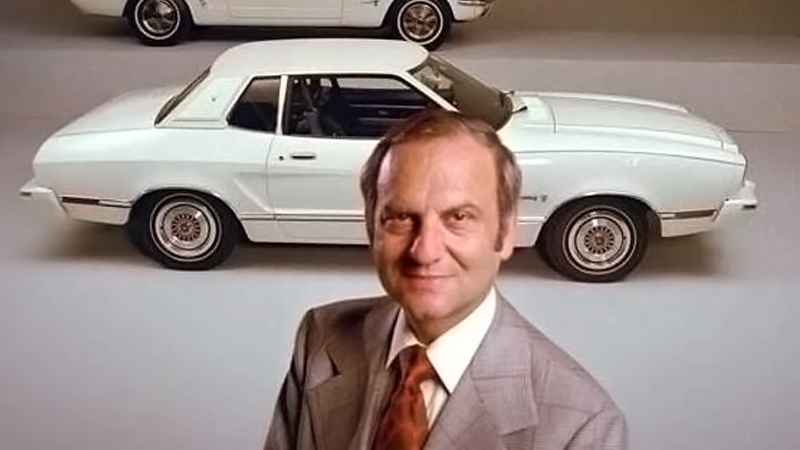
-
Summer 1963
Ford being impressed with Lola’s (English sports car brand) 1963 Le Mans 6th place overall finish, and its Mk VI GT car powered by a mid-ship Ford 4.6L V8 and space frame chassis, signed a deal with the founder, Eric Broadley. Ford would use Broadley’s expertise in car building and resources for a year to build a Ford designed mid-engined V8 GT. Contrary to popular belief, the Ford GT design was not taken from the Mustang I concept. Also, the GT was not a re-skinned Lola, but was a totally original and unique design with the program managed, directed and financed by Ford Motor Company.
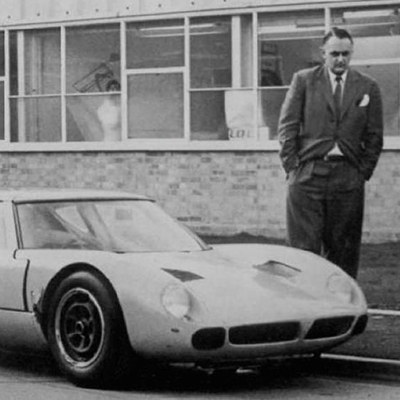
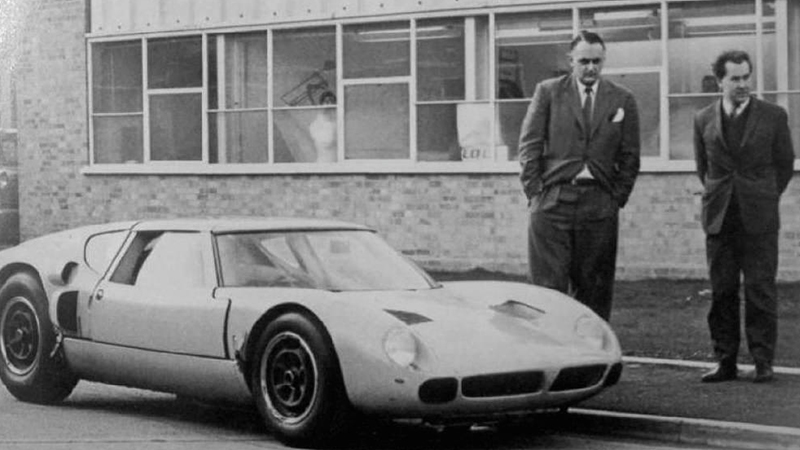
-
August 1963
Ford in Dearborn organizes the new GT project under the name Special Vehicles Activity (SVA). The operation in Slough was organized under the name Ford Advanced Vehicles (FAV). By the end of the month most, if not all of the team members were assembled at Slough and included the following:
- Roy Lunn - project director - supervised the engineering and development activities of Eric Broadley.
- Eric Broadley - responsible for the design, build and testing of the GT car. Ford engineers were under his supervision.
- Ford Engineers - Len Bailey - chassis engineer, Ron Martin - body designer and Chuck Mountain - mechanical design.
- John Wyer - Race preparation of the car and team organizer. Experienced with Jaguar and Aston Martin.
- Frank Zimmerman - Project chief and main contact in Dearborn.
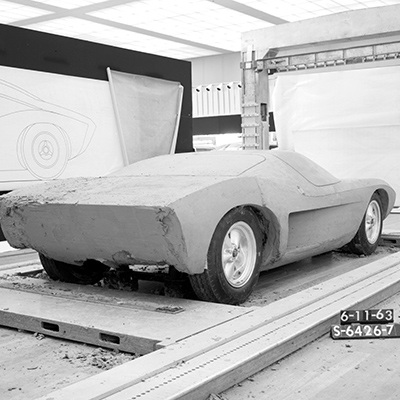

-
November 1963
Component testing was completed and the next several months were spent in detailing and procuring items for the first prototype builds.
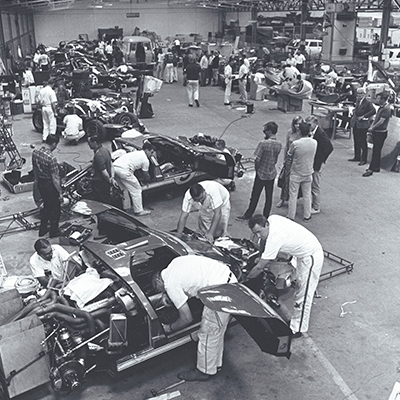
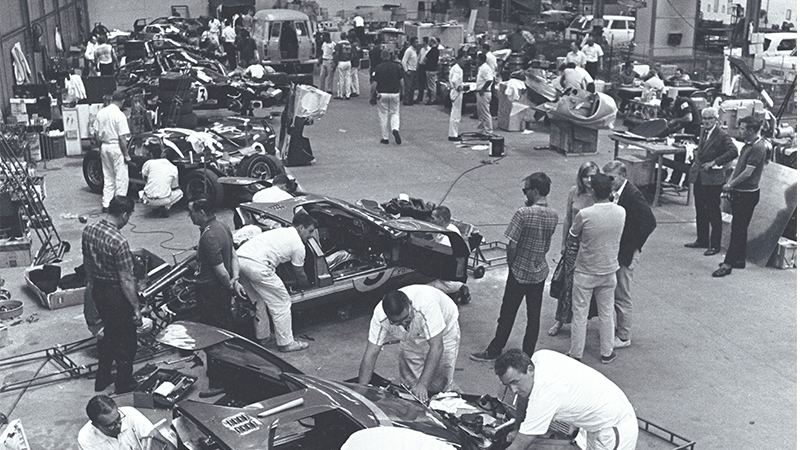
-
1964
Leo Beebe moves FAV, and the GT40 development, from Slough to Dearborn. Ford took control of all racing activities from FAV at the end of 1964 racing season. It was initially handed over to Shelby American in California (SAI). Other teams were added in 1965 and 1966.
Race Team
- Shelby American (SAI) - based in California
- Alan Mann Racing Ltd. (AMR) - Byfleet, England
- Holman and Moody (H&M) - Charlotte, North Carolina

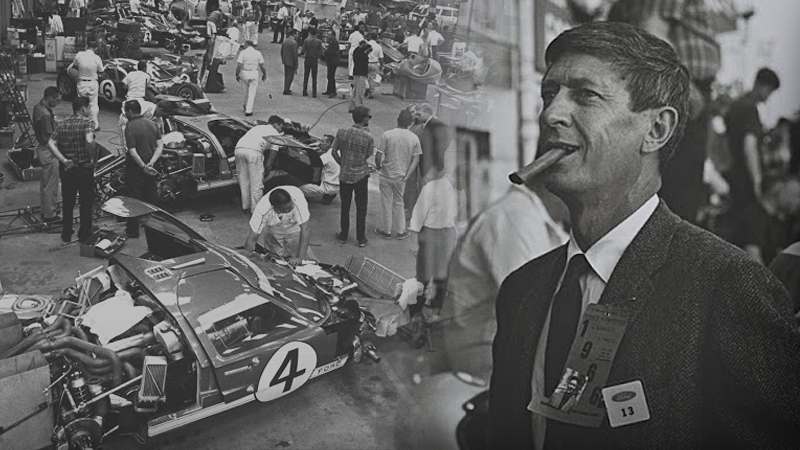
-
March 16, 1964
Abby Panels delivered to FAV the first chassis, and the car was completely assembled in only 16 days. Finished in white with matt-blue nose, black stripes and sill lines, it was equipped with a Ford 4.2 liter (256 CID) aluminum V8 developed for the 1963 Indianapolis 500 race.

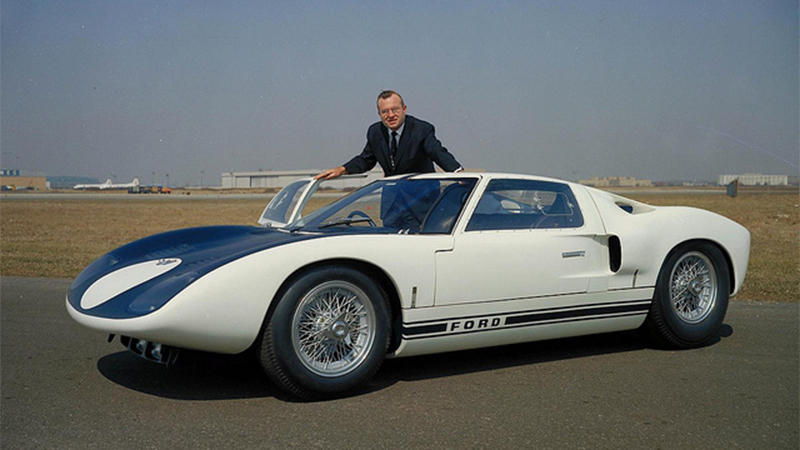
-
April 01, 1964
This new Ford designed and built GT40-101 Prototype race car - a highly detailed, sophisticated and powerful machine was announced to the press at a launch in a hotel near Heathrow Airport, London.
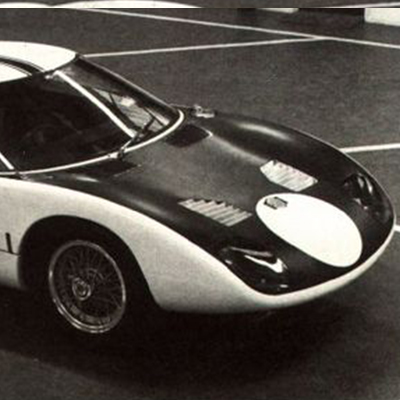
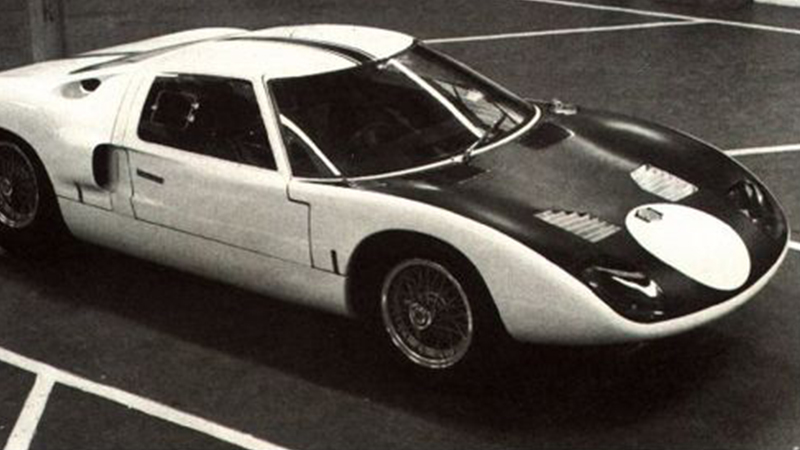
-
April 02, 1964
GT40-101 Prototype flown to New York to be shown to the American Press then returned to England for testing.
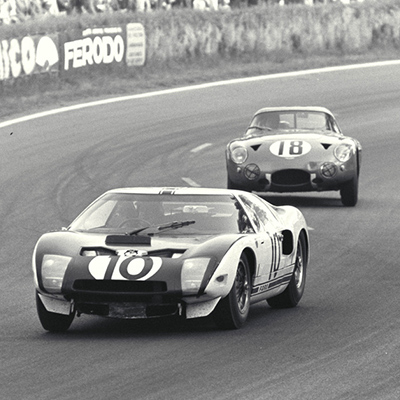

-
1965
Ford contracts with Shelby American manage the race team and update the GT40

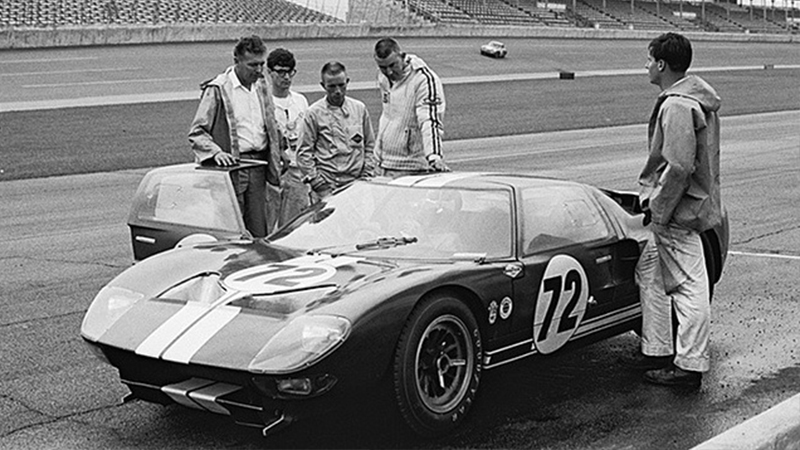
-
February 1966
The first GT40 Mk II-A vehicles debut at Daytona. The Mk II-A featured many upgrades from the Mk II predecessor. Some changes included a shortened nose, brake cooling scoops and quick change brake discs.
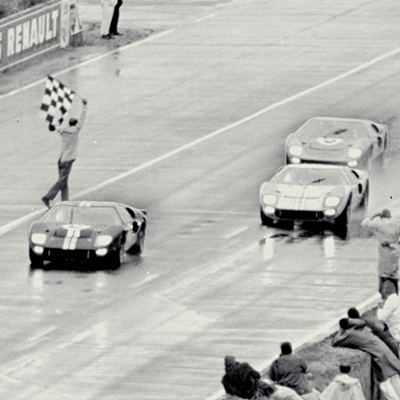

-
June 19, 1966
A Sunday with light rain, the Ford GT40 Mk II won at Le Mans. The first time in the 34 years of the race that an American Car had won. Click here to read about the highly debated finish.
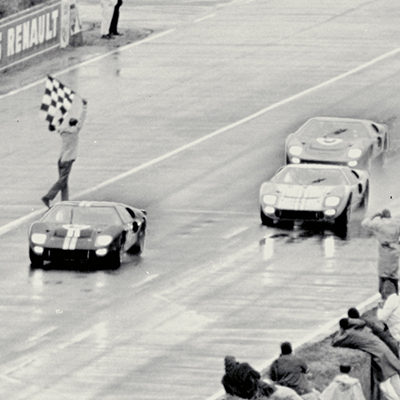
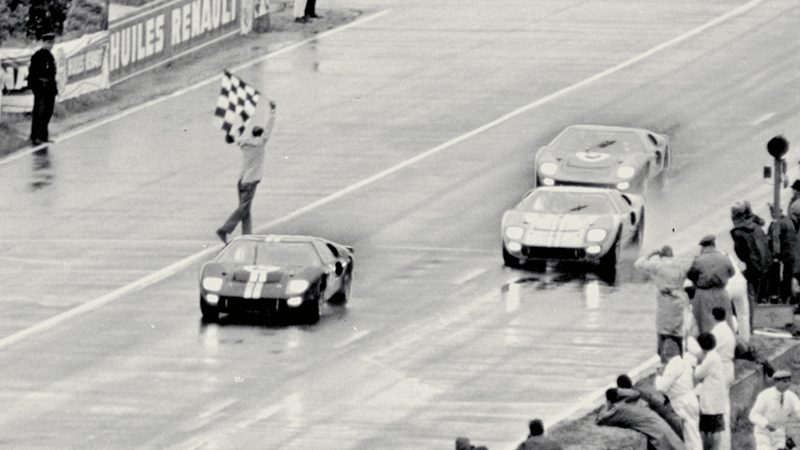
-
1968
Ford withdraws from endurance racing, although private teams continued to use the GT40.

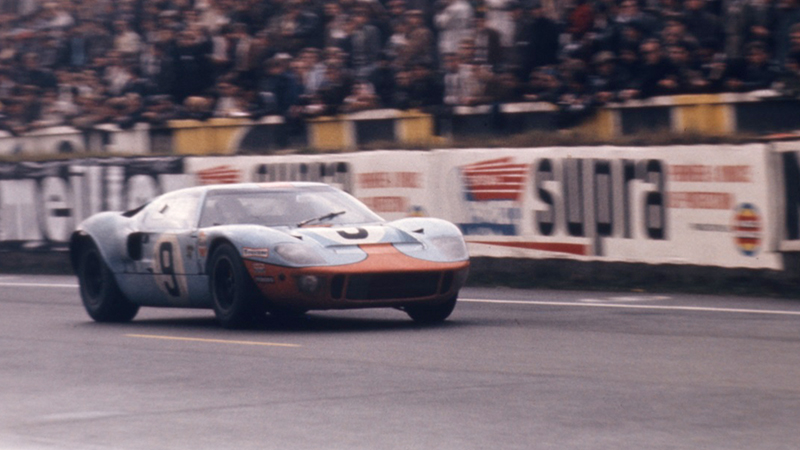
The People
The Key Players To International Fame
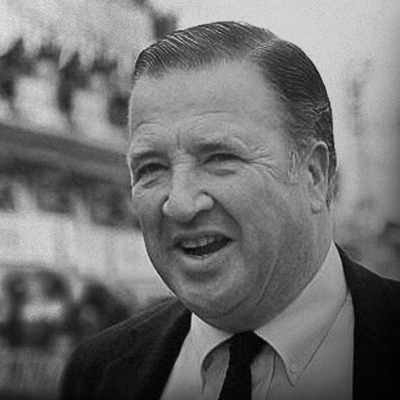
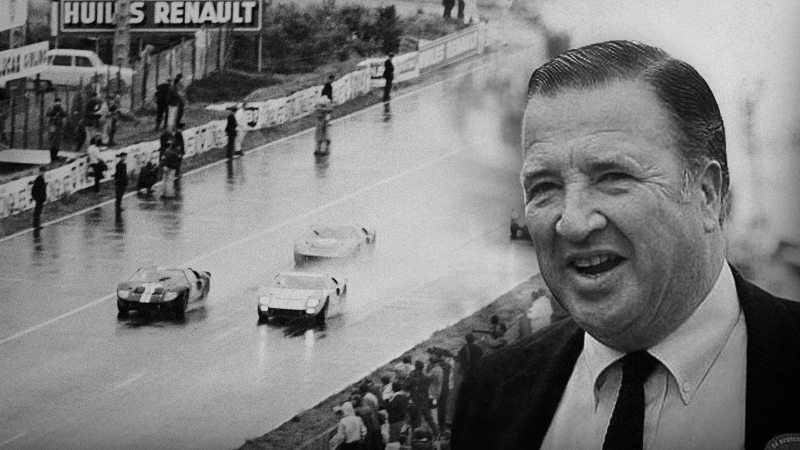
Henry Ford II
Henry Ford II became the president of Ford Motor Company in 1945, and while he quickly established his company as a racing leader in stock-car racing and several smaller niches, it wasn't until 1962 that he spearheaded a major worldwide motorsports campaign. A key element of "Ford Total Performance," as the effort was called, was victory at Le Mans, and Henry Ford II was determined to prove his company's worth in Europe.
Early in the Le Mans effort, buying the experience and technology of Ferrari and campaigning the cars under the blue oval seemed the most sensible thing to do. But when negotiations with Enzo Ferrari fell through, winning at Le Mans took on personal significance for Henry Ford II. Some argue that it all boiled down to Henry versus Enzo; the cars were just the weapons of choice.

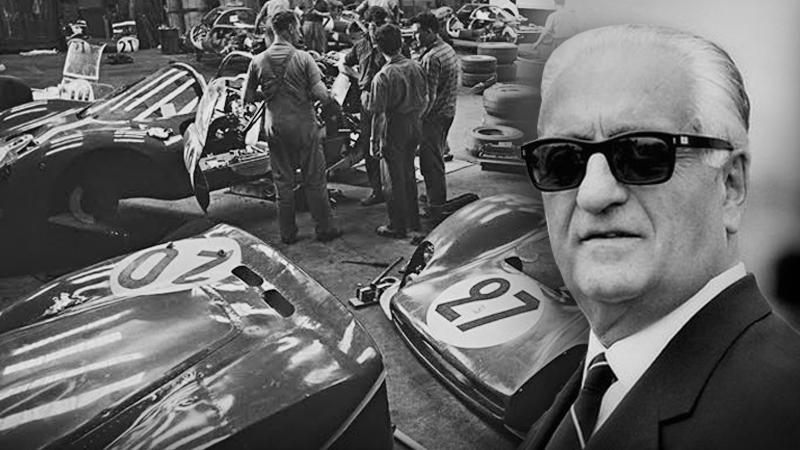
Enzo Ferrari
The apple of Henry Ford II’s eye, or so was the original intention. Potential partners at the onset of Ford Total Performance, Enzo and Ford would go down in the history books as brawling enemies by the end of the chapter. Lee laccoca originated a deal for Ford to purchase Ferrari. That fell through after an $8M difference of opinion and the rest is, as they say, history. Ford would lean on the help of Carroll Shelby and others to create a Ferrari-eating, Le Mans-winning beast of a car.
Enzo got into the automotive industry by working as a test driver for C.M.N. (Costruzioni Meccaniche Nazionali), a Milan-based car manufacturer which redesigned used truck bodies into small passenger cars. He was then commissioned to race one of their car’s during his competitive debut in the 1919 Parma-Poggio di Berceto hillclimb race, where he finished fourth in the three-litre category at the wheel of a 2.3-litre 4-cylinder C.M.N. 15/20. In 1924, however, success would be Enzo’s as he won the Coppa Acerbo at Pescara. Alfa Romeo recognized this offering him a chance to race. Enzo rejected the opportunity after Antonio Ascari’s death and focused on building up a team of 40 Alfa drivers. He kept racing, however, until 1932 when he left Alfa Romeo to found Scuderia Ferrari. In the ‘50s, to pay for his racing passion, Enzo decided to begin selling sports cars.
By the end of the ‘60s, increasing financial difficulties from racing and new safety and clean air emissions requirements for streetcars led Ferrari to begin looking for a business partner. This is when Henry Ford II comes into play. However, since that deal didn’t go through, FIAT was onboard to buy 50% of company with Enzo having 100% autonomy in the racing sector. Something Ford was not willing to offer.
After Enzo’s death in 1988, the Scuderia Ferrari team has had continued success in motorsports with World Drivers' Championship in 2000, 2001, 2002, 2003 and 2004 with Michael Schumacher and in 2007 with Kimi Räikkönen. His drivers won more than 4,000 victories and the Ferrari team took home 13 world titles, including 9 in Formula 1 since 1952.
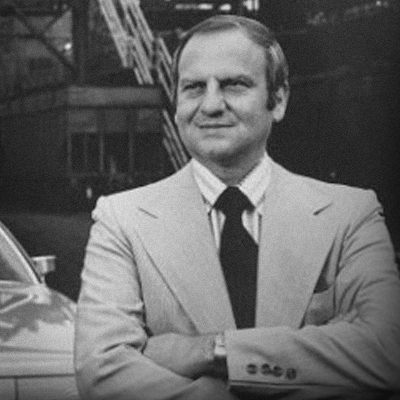
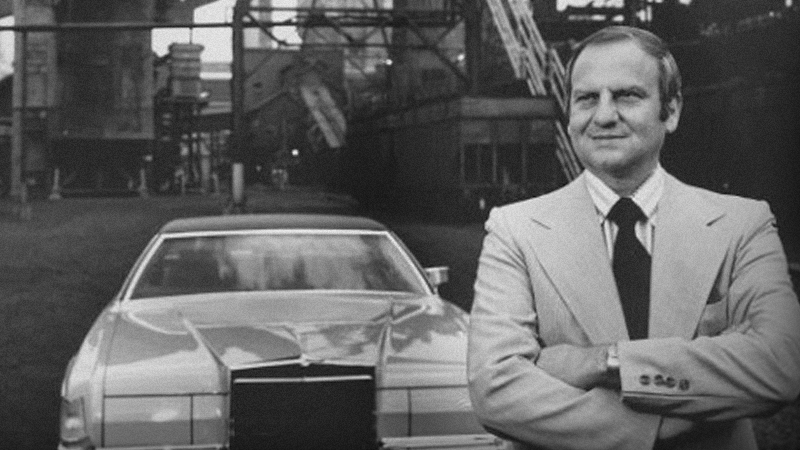
Lee Iaccoca
Lee Iaccoca is oftentimes credited with being on the short list of names associated with the development of the original GT40 project. In addition, Lee is known for spearheading the development of the Ford Mustang and Pinto cars. Go with us back to 1963. Ford came very close to purchasing a majority share in Ferrari, a deal originated by Lee. While price was one obstacle (Ferrari wanted $18 million, but after performing its due diligence Ford would only offer $10 million), the stumbling block became racing activity. Enzo was willing to hand over the manufacturing of street cars to Ford, but when it came to racing, Ferrari wanted complete autonomy.
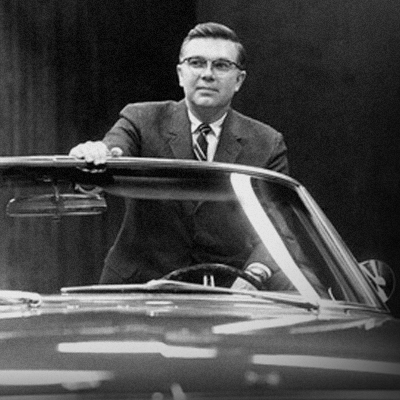
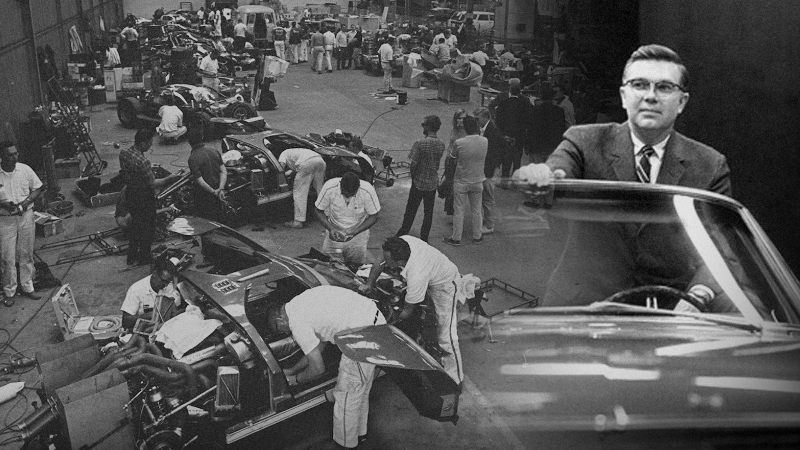
Don Frey
Don Frey was a key engineer for Ford in the development of the Mustang and later head of Ford Division. He campaigned for a roadworthy GT40 to support the racing program and to serve as a halo car for the Ford brand. Prior, Don Frey was tasked with closing the deal between the two companies. In what was expected to be the final meeting before an agreement was reached, Enzo Ferrari raised the only question that truly mattered to him. “If I wish to enter cars at Indianapolis and you do not wish to enter cars at Indianapolis,” Enzo reportedly asked, “Do we go or do we not go?” “You do not go,” Frey replied, to which Ferrari countered, “It was nice to know you.” There would be no deal, despite later efforts from Ferrari to reopen negotiations.
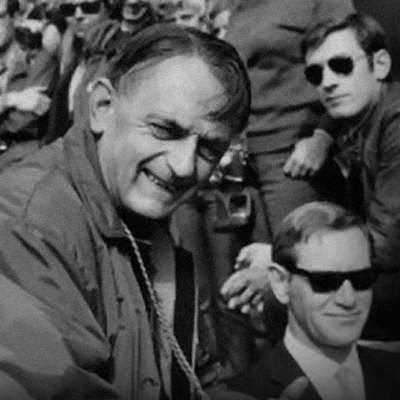
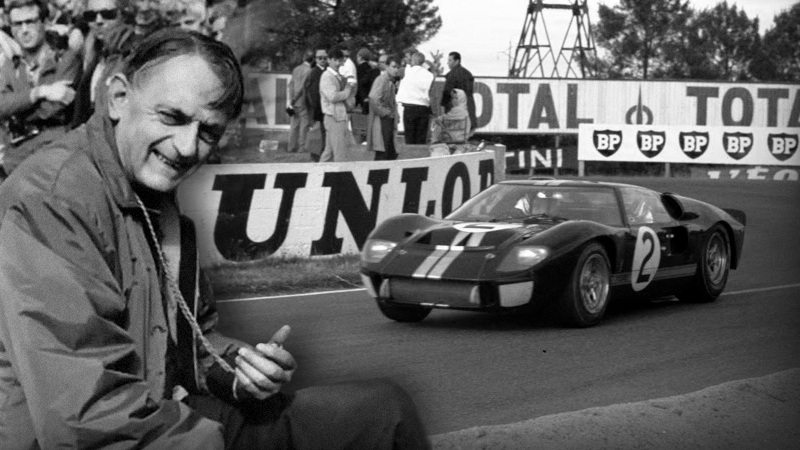
John Wyer
Wyer is most known for Le Mans victories for Aston Martin in 1959, the Gulf team Ford GT40s in ‘68 and ‘69 and of the Gulf-Mirage in 1975. That’s right, those light blue and orange liveried cars are accredited to Wyer and his longtime sponsor Gulf Oil.
Wyer got into the automotive industry by apprenticing at Sunbeam Motor Company. He then joined Solex Carburetors. He resigned from there in 1945 to run Monaco Motors for his friend Dudley Folland. Soon after, his introduction to sportscar racing would seal his destiny. In 1950, David Brown invited Wyer to form and run the Aston Martin team. Brown desperately wanted to win at Le Mans, just like Ford. Rival, Jaguar Cars, won Le Mans five times in the ‘50s while Aston Martin garnered three second-place finishes. Finally, by 1959, the company was rewarded with a 1-2 victory at the Sarthe, headed by Roy Salvadori and Carroll Shelby. Wyer, by now, was the general manager of Aston Martin Lagonda Limited, while Reg Parnell as tasked with the day-to-day of the racing aspirations.
Aston Martin went on to win the World Sports-Car Championship that year, but decided to take a break and venture into the world of F1, yet did so unsuccessfully. This is around the time Ford made success at Le Mans a priority. In 1963, Ford invited Wyer to the team’s management at Slough. Ford fired him from his job as team manager in ‘65, but Wyer kept racing GT40s under his own name. Wyer teamed with John Willment to form JW Automotive and got their GT40 on the podium in ‘68 and ‘69 with the help of Gulf Oil as the main sponsor.
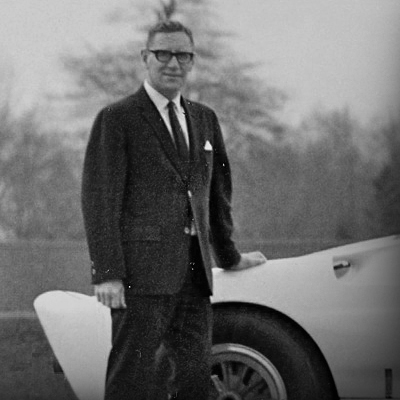

Roy Lunn
Often referred to as the “Godfather of the GT40”, Roy’s accomplishments led to Ford’s domination of international sportscar racing in the mid-late-1960s. Ford’s GT40, Mark IIs and Mark IV, were designed, engineered and developed under Roy Lunn’s direction at Ford’s Skunk Works, Kar-Kraft. Lunn was manager of the Advanced Concepts Group.
Lunn entered the automotive industry in 1946 when AC Cars hired him as a designer. After just a year he moved to Aston Martin as the assistant chief designer for the DB2 program. He joined Jowett in 1949 as chief designer and was involved in a variety of projects. Lunn also participated in races. He was the co-driver for Marcel Becquart when they won the 1952 RAC International Rally.
He moved to the U.S. in ‘58 and became the manager for the Ford Advanced Vehicle Center. In ‘62, Lunn became a U.S. citizen and his team of engineers developed the two-seat Ford Mustang I prototype in just 100 days. At this time is when he was tasked with creating and developing a GT car with Ray Geddes and Don Frey. In ‘63 is when the work began on the new racecar loosely based on the Lola GT. By April 1964, it was presented to the press for the first time.
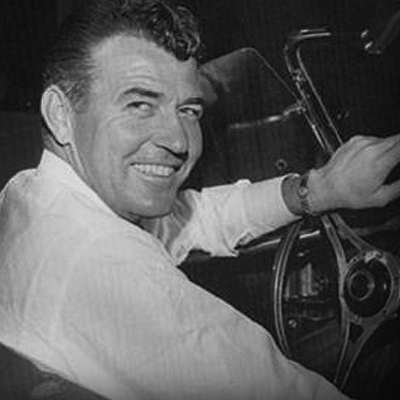
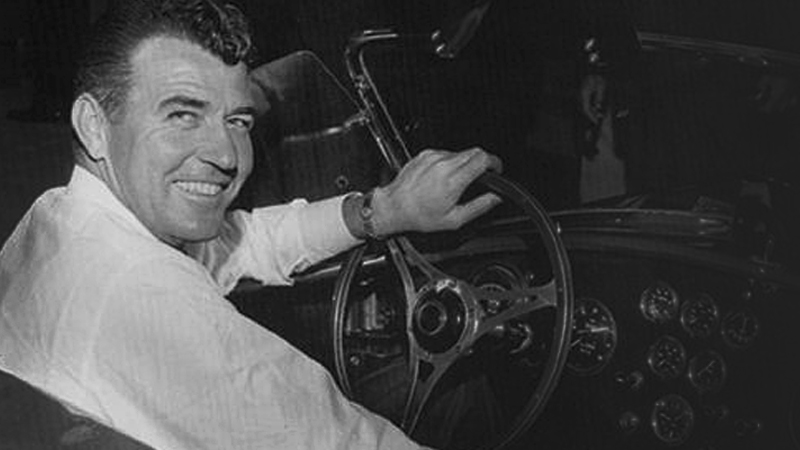
Carroll Shelby
In a town of 200 people called Leesburg, Texas, Carroll Shelby was born on January 11, 1923. Carroll graduated from a high school in Dallas, Texas where the family had moved. World War II was going on so he joined the Army Air Corp. In the Corp, he served as a flight instructor. He left the service as a Second Lieutenant. Shelby started racing in 1952 driving an MC TC in 1965.
Folks from Ford reached out to Shelby after his success privateering. They were looking to beat the Italians and after his success at Le mans in his own Cobras, seemed like a perfect fit. With the GT40, it wasn’t so much about innovative technology, but being crafty. Lots of power in a small shell/lightweight shell. Shelby replaced the 289ci GT40 with the same powerful, big block 427ci V8 that powered his Cobras. The lower revving, larger displacement V8s were more able to take the stress of long endurance races than the higher-revving, small displacement engines used by Ferrari.
Shelby not only helped Ford end Ferrari’s racing dominance, he exacted sweet revenge for Enzo’s snub and garnered Ford a remarkable four-year winning streak from ‘66 to ‘69.
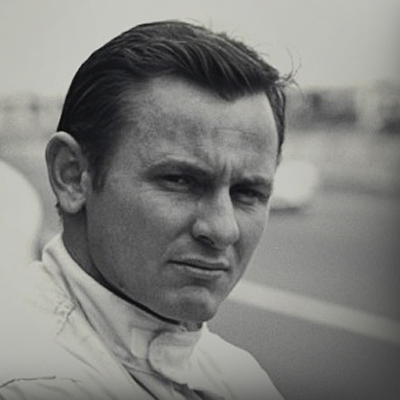

Bruce McLaren
“To do something well is so worthwhile that to die trying to do it better cannot be foolhardy. It would be a waste of life to do nothing with one’s ability, for I feel that life is measured in achievement, not in years alone.” McLaren made such a name for himself, not just through his driving, but managing skills, that his name lives on with the McLaren team - one of the most successful in F1 championship history. Oh yea, and Bruce was the guy driving the No. 2 GT40 that won the ‘66 Le Mans for that highly debated finish.
Bruce was born in Auckland, New Zealand. As a nine-year-old, he contracted Perthes disease which left his left leg shorter than the right. Bruce was in the right environment to hone in his natural skills. His father gave up motorcycle racing to race cars once Bruce was born. Les, his father, also owned a service station and workshop where Bruce would hang out during his younger years developing his passion for cars and driving.
Bruce would find his way into an F2 car racing against the best Europe had to offer. At the 1958 German Grand Prix he would shock onlookers placing 1st in F2 and fifth overall (F2 cars ran with F1 cars). McLaren had success in ‘59 and early ‘60s in F1, but would leave Cooper in ‘65 and announce his own GP racing team with co-driver Chris Amon. This catches us up to the ‘66 Le Mans when Ford decided that the Bruce McLaren/Chris Amon and Ken Miles/Denis Hulme cars should cross the finish line together, for two reasons: it would be the first time ever that a pair of cars would take the overall victory at Le Mans, which would drive home the point that the car, a Ford GT, and not a driver, had won the race. Secondly, it would make for a great publicity photo.
Ken Miles was leading and lifted off the gas allowing McLaren in the No. 2 car to get ahead as they crossed the finish line. It was ruled that McLaren’s GT40 would be crowned with the win because his car traveled a greater distance, having started several positions behind Miles’ GT40. This was a huge disappointment to Miles, who had helped Ford develop the car and was hoping to be rewarded with the 1966 triple crown (wins at Daytona, Sebring and Le Mans).
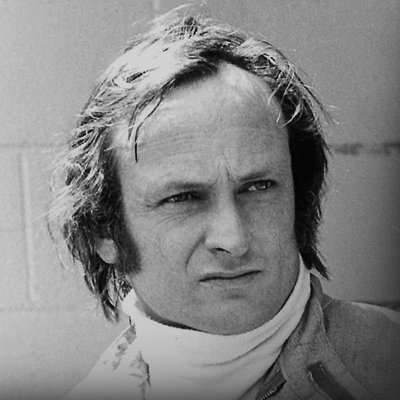
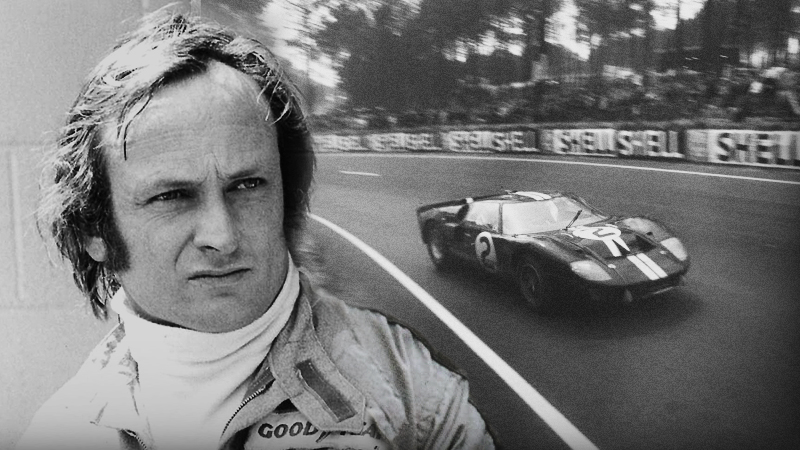
Chris Amon
When only 12 years old, Chris saw Stirling Moss win the 1956 NZ International Grand Prix (NZIGP) at Ardmore, near Auckland, NZ, driving his own 1954 Maserati 250F chassis 2508. Chris was instantly hooked on motor racing and thereafter barely missed a race meeting at Ohakea air force base, the new Levin track, or Ardmore.
At 16 years of age, Chris entered his first race with an A40 Special race car, but due to engine failure, didn't actually make the start of the race. At 17-years-old, Chris entered his first race at Levin on April 15, 1961. Chris drove his little 1956 Cooper T41 Climax 1490cc gaining 4th place in his first race and 2nd place in his second race. In January 1962, aged 18, he entered his own 1954 Maserati 250F, chassis 2509, in the NZIGP at Ardmore and had a firsthand view of Stirling Moss, the maestro, winning the NZIGP once again.
The driving talent shown by Chris in 1962 in his venerable Maserati 250F led to an early offer to drive in international Formula One and Chris flew off to the UK in 1963. With so much natural talent, Chris should have been a Formula One World Champion – but bad luck stood in his way too often.
Of all the F1 World Championship races he entered from 1963 until 1976, he surprisingly was never to win, although he came agonisingly close on so many occasions. He did win many other notable races including the 1966 Le Mans 24 Hour race driving the Ford GT40, partnered by Bruce McLaren, and the 1967 Daytona 24 Hour race driving a Ferrari 330 P4 partnered by Lorenzo Bandini.
Chris won both the 1968 and 1969 NZIGPs. He was runner up in 1968 and Tasman Champion in 1969 driving his ‘works’ Tasman Ferrari race cars. Like many other drivers of his era, he was a highly versatile driver and was involved in many different international race classes including F1, F2, endurance, Can-Am and F5000.
Check out the video as Chris (present day) discusses the debated finish, why the car was painted black and his favorite moment of the race.
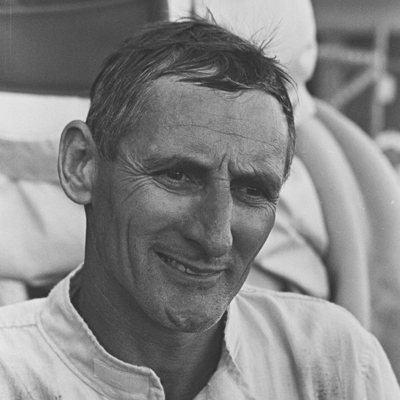
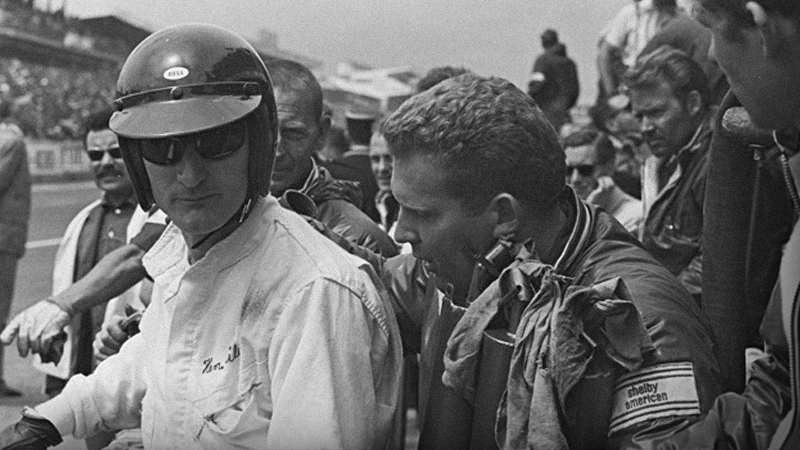
Ken Miles
Ken Miles was a British racing driver that came into fame as a race car driver and engineer in the U.S. with American teams on the international scene. Ken moved from England to Los Angeles, California to pursue his racing career, and in1953, won 14 straight victories in SCCA racing. Because of his great skill and talent as both a driver and mechanic/engineer, Miles was a key member of the Shelby/Cobra race team in the early ‘60s. The American racing crew would refer to Ken as “Teddy Teabag” for his tea drinking and even “Sidebite” for talking out of the side of his mouth.
That catches us up to Ken piloting a Mk. II. In 1966 he won the 24 Hours of Daytona and the 12 Hours of Sebring. Then, of course, was Le Mans. Miles was leading the race and lifted off the gas allowing McLaren in the No. 2 car to get ahead as they crossed the finish line due to Ford’s attempt at a unique publicity stunt of two cars crossing the finish line at the same time. In theory, the cars would have crossed the finish line at the same time resulting in the first pair of cars taking the overall victory, further portraying that the Ford cars, not the drivers, were the real winners.
However, it was ruled that McLaren’s GT40 would be crowned with the win because his car traveled a greater distance, having started several positions behind Miles’ GT40. This was a huge disappointment to Miles, who had helped Ford develop the car and was hoping to be rewarded with the 1966 triple crown (wins at Daytona, Sebring and Le Mans).
Ken Miles was a brilliant driver and car developer who was hired by Caroll Shelby as a test driver in the early 1960s. Miles helped Shelby develop the Cobra, Mustang GT350 as well as the GT40. Unfortunately, Ken Miles was killed on August 17, 1966 at Riverside International Raceway while testing the new Ford J-car, an intended replacement for the Mk. II.
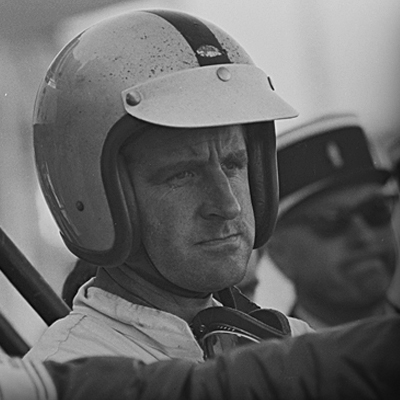
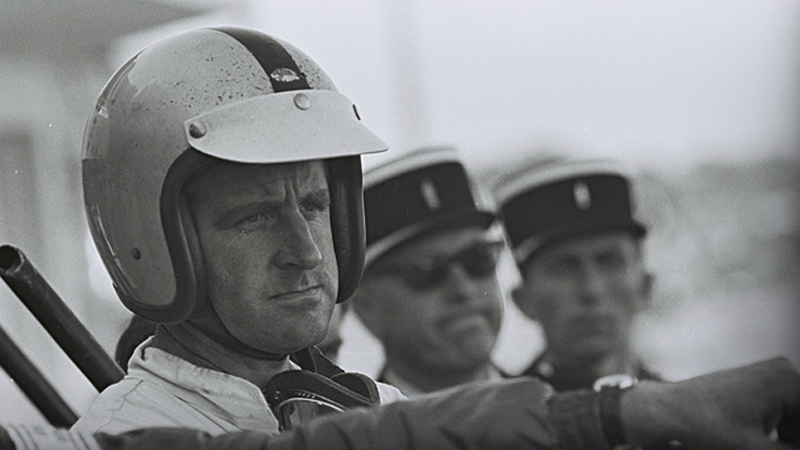
Denny Hulme
Denny Hulme was the kiwi splitting driving duties with Ken Miles in one of the Shelby-American, Inc. Ford GT40 Mk IIs. As you may know by now, both cars were on the lead lap, running first and second, when Ford decided upon their failed publicity stunt. Hulme’s teammate Ken Miles was leading the race and lifted off the gas allowing McLaren in the No. 2 car to get ahead as they crossed the finish line due to Ford’s attempt at a unique publicity stunt of two cars crossing the finish line at the same time. In theory, the cars would have crossed the finish line at the same time resulting in the first pair of cars taking the overall victory, further portraying that the Ford cars, not the drivers, were the real winners.
Denny Hulme was a very diversified and talented driver having won the 1967 Formula One World Drivers’ Championship with eight more victories in F1 from ‘65 to ‘74. Following his Formula One tenure with Brabham, Hulme raced for McLaren in multiple formats—Formula One, Can-Am, and at the Indianapolis 500. Hulme retired from Formula One at the end of the 1974 season but continued to race Australian Touring Cars.
During his career, Hulme drove the most powerful cars of his era. He raced in F1, F2, Indycars, Saloon/Touring Cars, CanAm and endurance races, all during the same season. After retiring from F1, he even drove in truck races.


Leo Beebe
Beebe would become head of Ford’s racing programs, growing up a jock and not a driver. Beebe was a graduate of Michigan in 1938 where he starred on the basketball team, and was captain by his second year. He also played baseball and won the Big 10 award for proficiency in athletics and scholastic achievement.
After graduation Beebe would become a high school sports coach and eventually serve in World War II. This is where the story really gets interesting. Beebe would meet Henry II and they would serve together in the Navy and form the kind of bond only men do when in uniform during war. Beebe was no mechanic, or even enthuisast of automobiles, but Henry II saw potential in him and would take him in to become his top troubleshooter. Beebe had never seen an auto race until he would be made chief executive in charge of all Ford racing - stock cars, Indy cars, sports cars … the works. Henry II needed a man in charge he could trust, something earned on the battlefield.
On January 27, 1965, Beebe announced that Shelby-American would be building and racing all of Ford’s competition sports cars. He would go on to say, “We are taking this move to consolidate the construction and racing of all our GT-type vehicles within the same specialist organization.”

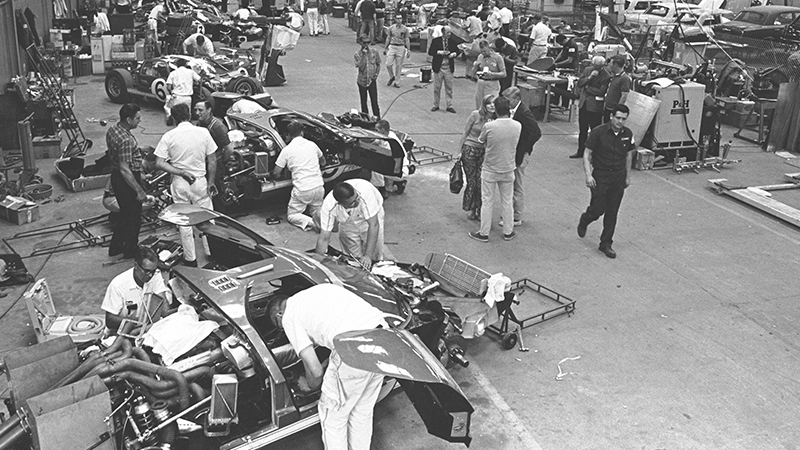
More Key Players
Wayne Ferens
Published author/historian and contributor to this site.
Now retired, Wayne Ferens spent 45 years in the automobile business. His career jump started after graduating college in engineering and automotive technology. He then spent two years with the GM co-op training program in Detroit working at GM Diesel and Chevrolet Engineering in engine development. Wayne was then employed for four years working with Ford Motor Company in Dearborn with the Engine and Foundry Division (E&F) in the development of high performance and production engines. Duties included projects on the GT program at the Engine and Electrical Engineering Center, Dearborn Proving Grounds, Rouge Industrial Complex and other research facilities.
Wayne is an early member of the Henry Ford Heritage Association, a founder of the Ford T-plex Museum in Detroit and Chairmen of SAE (Society of Automobile Engineers) in Pittsburgh, Pennsylvania. He now volunteers giving lectures several times a year to students and engineers about the industry past and present. He’s also written several books on the Ford Model A and the Ford GT MK IV race cars, and many articles about the industry for SAE, club newsletters, historical organizations, museums and magazines.
“I have enjoyed working with RK Motors on the history of Ford's GT program and their very special Le Mans winning car GT40P-1046. It is truly a piece of American racing history.”
There are almost too many names to mention that contributed to Ford’s domination at Le Mans, here are few courtesy of our friend Wayne Ferens:
John Cowley - Race Manager
Homer Perry & Chuck Folger - Development Engineers coordinated engineering and technical information among the race teams as well as vehicle testing at the Dearborn Proving Grounds (DPG), Ford's Kingman, Arizona test track, Daytona, Sebring and Riverside.
Al H. Dowd - Competition and Development Manager
Ford Advanced Vehicles
Eric Broadley - Responsible for the design, construction and testing of the GT.
Ford Engineers assigned to FAV on Broadley’s team:
Len Bailey - chassis engineer
Ron Martin - body designer
Chuck Mountain - mechanical design
John Zimmerman - Project Chief and main contact in Dearborn, Michigan
Ford Engine and Foundry Division
William D. Innes - VP Manufacturing Group and Chief Engineer at Ford's Engine and Foundry Division - responsible for the design, assembly, testing and shipping of all GT engines.
William Gay - E&F Engineer. Gay was the chief engineer on Ford's Indy engine.
Tom Landis - Special Engines Engineering Department
Kar Kraft
In order to speed things up in the development of the GT project, Roy Lunn received permission from Ford management to establish a facility, similar to the one at Slough, but outside the main Ford system in Dearborn. Originally started in 1964 in a machine shop that was owned by Nick Hartmans father in Dearborn, the organization quickly ran out of space. A new 10,000 sq. ft. facility was established at 10611 Haggerty Street in Dearborn and had a small team of designers, engineers, technicians and fabricators that operated the next six years handling special projects directed by Ford, including GT prototypes. The first assignments given to the newly established Kar Kraft operation was the development of a new trans/axle assembly (KK T-44), and the installation of the NASCAR 427 engine into a GT car. This 427 installation into GT-106 became a prototype for the MKII completed in April 1965.
Chuck Mountain - mechanical engineering & design
Ed Hall - mechanical engineer & designer
Bob Negstad - engineer
Pete Weissman - transmission specialists
Donald Eichstadt - engineer
Ron Fournier - fabricator


